I would not be here today writing about nature if it weren’t for my mentor, Paul Stoutenburgh. In the mid-1950s when I was a teen growing up next to the potato fields in the Oregon part of Mattituck, my mother turned my attention to a small notice in the Mattituck Watchman-Long Island Traveler. It said that a man named Paul would be showing slides of birds at a local church.
Outdoors
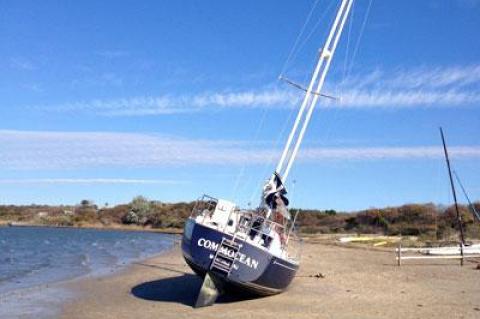 Thar She Blows
Thar She BlowsWho has seen the wind?
Neither I nor you:
But when the leaves hang trembling,
The wind is passing through.
Who has seen the wind?
Neither you nor I:
But when the trees bow down their heads
The wind is passing by.
Christina Rossetti
The trees were not alone in bowing their heads on Saturday, Sunday, and Monday. Gusts reached over 60 miles per hour on Sunday morning causing the sloop Commocean to break her mooring and wash up on South Lake Beach in Montauk.
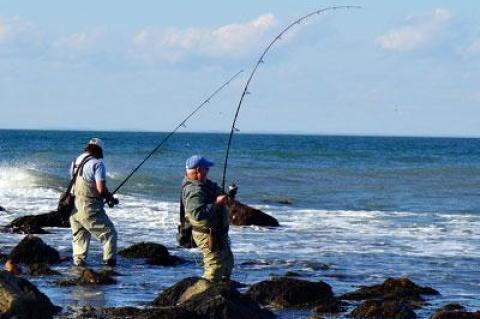 It’s About the Characters
It’s About the CharactersI admit it. Sunday night after “Homeland,” I watched the third episode of “The Affair,” which, in case you’ve been at sea for a month or so out beyond cable, is a soap opera based in Montauk, a place I have called home for nearly a half century.
The next day, I went downtown to Paulie’s Tackle shop, always an interesting place to be, especially during this, the height of the fall striped bass surfcasting season, a shop that the writers of “The Affair” might have thought to visit.
Out of the mouth of babes come gems . . . to paraphrase a well-based adage about the wisdom of children. Such was the case when Judy Shepard was driving her 4-year-old granddaughter home from preschool in Sag Harbor last fall.
As they passed Otter Pond on their way to Noyac, little Irina asked the name of the pond. When Judy responded, Irina asked, “Are there otters in it?”
“No” came the reply.
Circles and squares, rectangles and cones, triangles and cylinders, octagons, pentagons, spheres and so on. We are surrounded by symmetry, and why not? The earth is spheroid, the moon and the planets are round, and so, it seems from our perspective, is our sun. According to the conjectures of some astronomers and astrophysicists the universe is circular.
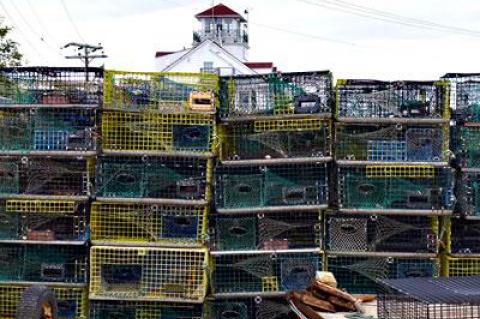 The Bigger the Pile . . .
The Bigger the Pile . . .I was returning from a dump run the other day, and for once did so without having plucked some doodad from the freebee table of claptrap, jettisoned painfully or not from a Montauk neighbor’s horde of bric-a-brac — gizmos with wires, romance novels, and a turkey-handled potato peeler that probably hadn’t skinned a spud in years.
Little Northwest Creek is, indeed, little and in the extreme northwest corner of East Hampton Town. It serves as part of the border between the town and the Village of Sag Harbor. The stream itself is 10 feet at it widest, but the wetlands on either side of it are substantial and in terms of area coverage rival the wetlands on the creek’s much bigger neighbor to the east, Northwest Creek.
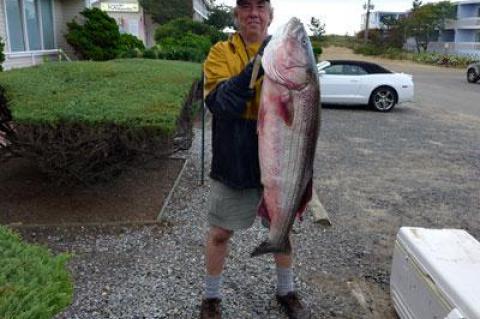 The Detective Is on the Case
The Detective Is on the CaseStephen Lobosco of Sag Harbor, whom many of you will know as the man with an impressive antique fishing lure collection, was coaxed out into the rain by a friend on Saturday morning, a morning that turned into an all-day, arm-wearying, catch-and-release marathon in one of Montauk’s easternmost, south-facing coves.
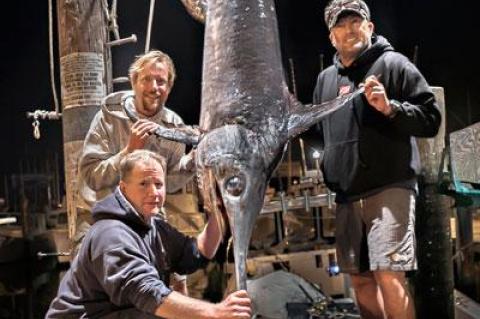 A Counter-Migratory Thing
A Counter-Migratory ThingJordan Enck and Tike Albright leaned against the split-rail fence just west of the Montauk Lighthouse on Monday afternoon beside their bikes with fat tires meant for peddling through sand. The bikes were outfitted with PVC tubes, scabbards for surfcasting rods.
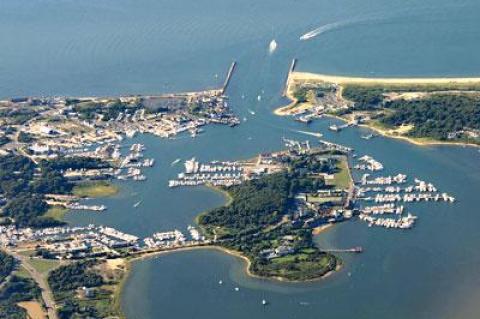 Nature Notes: Dilution the Best Solution
Nature Notes: Dilution the Best SolutionNot only are we faced with more and more carbon dioxide in the atmosphere each year, but with global warming resulting from it and acidification of the seas. One might say we are in for calamitous times if we don’t somehow reverse these dangerous headlong trends. But how can we, especially in an age when we are so conscious of our own mortality and want to live life to the fullest? Planes, trains, and automobiles. Coal, oil, and natural gas. Self-indulgence? Yes. The need to survive? Surely.
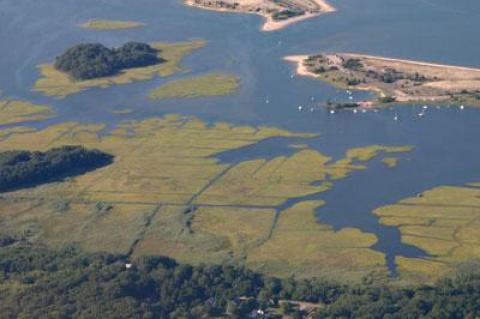 Nature Notes: Disappearing Hammocks
Nature Notes: Disappearing HammocksCall them what you will — aits, isles, atolls, cays, keys, islands, reefs, shoals, even continents — there are millions of them across the globe. The name that I particularly like to describe the smallest of these patches of raised land surrounded by water, very wet marshes, and in some cases even by sand, is hammock, from the Spanish hamaca. We have a lot of them right here in our own backyard.
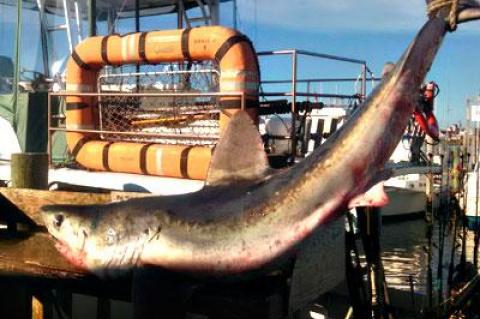 The Big Guys Are Here
The Big Guys Are HereCapt. Burt Prince and his mate Gary Starkweather took the Susie E charter boat about 20 miles south of Montauk the other day and returned with a rarity, a porbeagle shark, 7 feet long, 54-inches in girth, and weighing just under 400 pounds.
“He stayed deep. We circled him and he corkscrewed up. Strange. We thought he was a mako, but he did not fight hard,” Prince said.
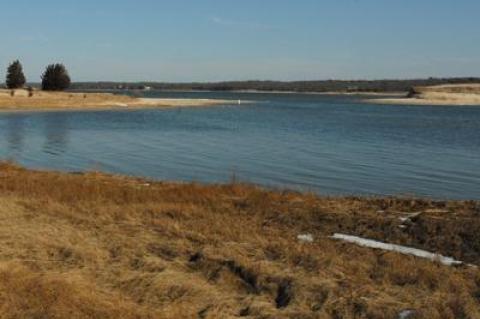 Creek to Be Reopened to Shellfishing
Creek to Be Reopened to ShellfishingImproved water-quality test results at Northwest Creek prompt state to open long-closed waterway at the end of the year.
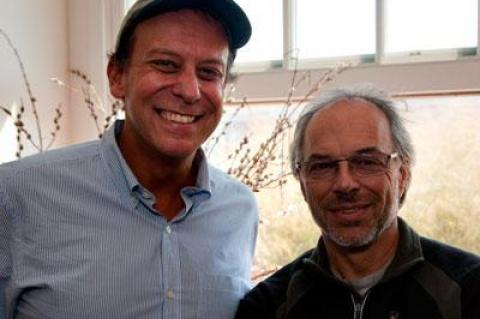 Don’t Rush Off Now
Don’t Rush Off NowThere’s something sad in September’s light, in her sunsets, in her wind that blows a passionate, late-summer kiss, or whispers her warm goodbye, hasta luego, or, as I’ve heard it said in Kentucky, “Now don’t rush off.”
I’m referring to September in the feminine. That’s because I’ve been thinking about what Mike Martinsen said during the Concerned Citizens of Montauk event at the Coast restaurant in Montauk on Saturday. It was a seafood seminar built around an introduction to Paul Greenberg and his new book, “American Catch: The Fight for Our Local Seafood.”
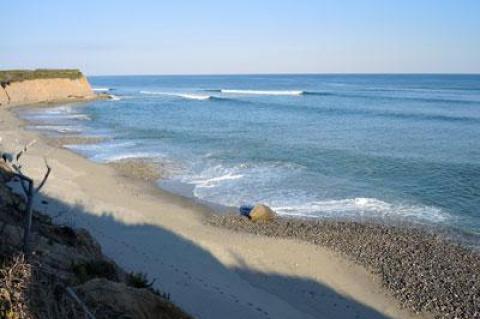 Nature Notes: Good, Bad, and Ugly
Nature Notes: Good, Bad, and UglyIt’s fall, and pleasant, but dry. It’s another round of the good, the bad, and the ugly. The good? The white and purple asters in the yard that are flowering at a great rate — white wood aster, smooth aster, stiff aster, panicled aster, calico aster, wavy-leaved aster, and heath aster in the order of flowering — with the white wood asters beginning in mid-August. Some goldenrods are chiming in as well, and the bees are going crazy gathering pollen, but as is the state of things in the past several years, none of them are honeybees.
 Healing, Reeling in the Surf
Healing, Reeling in the SurfOn Friday, Surfers Healing came to Montauk once again. Israel (Izzy) Paskowitz and his band of Hawaiian surfers travel the East Coast each year visiting popular beaches to take autistic children surfing. Parents travel hundreds of miles to give their kids a day in the waves, an experience that calms and delights them more than just about any other, they say.
Have we escaped a superstorm? In 2011 we had Irene at the end of August, in 2012, it was Sandy at the end of October. We missed the bullet last year, but the tropical storm season is not over, and when it is, the northeaster season will be right at its heals.
The glaciers are melting, the seas are rising, the globe is warming. Yet, the Farmers Almanac, which is right most of the time, says we are going to have a hard winter. I have yet to see a wooly bear to measure the brown against the black, and have no idea what the winter will be like.
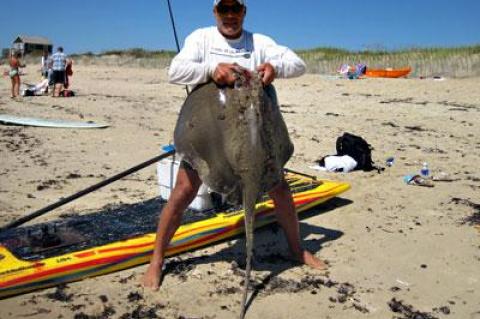 A Name That Strikes Fear
A Name That Strikes FearOne of our Ditch Plain regulars, while sitting on a bench in front of the former East Deck Motel, noted that David Schleifer, retired New York City firefighter, surfer, and the kind of fisherman whose name causes fish of all kinds to quiver in fear, looked like he was sitting on the toilet out toward the horizon.
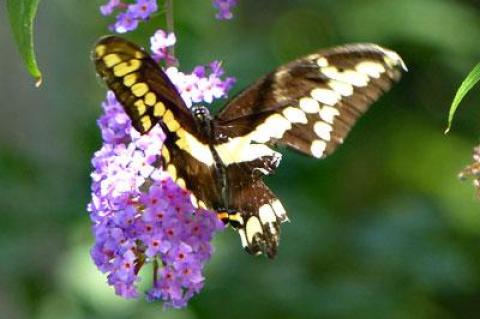 Nature Notes: Butterfly Migration Begins
Nature Notes: Butterfly Migration BeginsMost of September is summer, but in my eyes all of September is fall. Lots of wonderful things start happening at the end of August. The rich and the rowdy leave for the city. There is less traffic on the roads and highways. The days are cooler and the air less humid. Striped bass and neotropical warblers begin their fall migration southward. Snowy tree crickets and katydids sing the loudest. Asters and goldenrods break out in whites, blues, purples, and yellows. Beach plums ripen. Cranberries begin to ripen.
I live across the street from Noyac’s Long Beach, a barely more than 100-foot-wide isthmus between Noyac Road and Route 114. The isthmus, with its county road, Long Beach Road, separates the inner Sag Harbor Cove from the outer Noyac Bay, part of the Peconic Estuary.
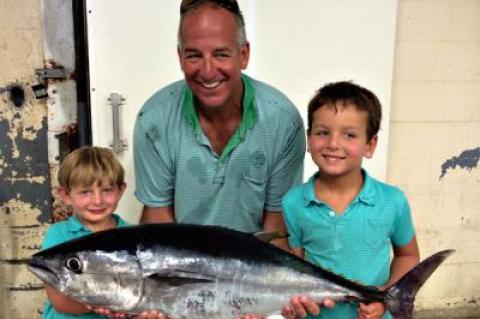 Montauk’s Man in the Know
Montauk’s Man in the KnowWhen I heard the news, I thought of his big laugh, big smile. Then the memories began to flood like the tide around the Montauk Marine Basin docks. Carl Darenberg Jr., “Carly,” was always there, like big Carl senior, and Vivian, his mom.
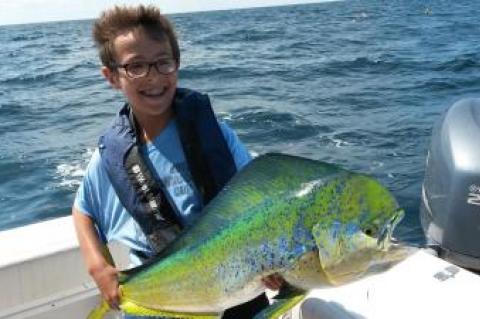 Let’s Take to the Water
Let’s Take to the WaterA week ago, Capt. Skip Rudolph and his wife, Vickie, took the Adios charter boat offshore on an overnight to tuna country. He’s been busy guiding anglers to our rich, inshore grounds for striped bass and blues. It had been a while since the Adios had gone to where the Continental Shelf dives into offshore canyons formed eons ago by rivers of melting glacier.
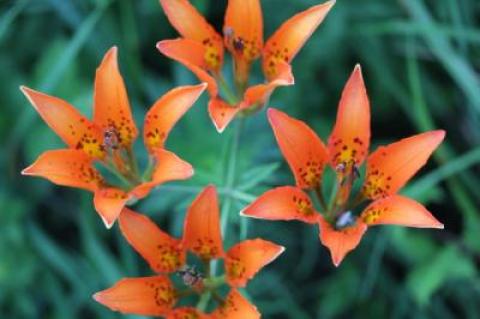 Nature Notes: Long Island’s Grasslands
Nature Notes: Long Island’s GrasslandsNorth American “life zones” as defined by Clinton Hart Merriam in the early 1900s are equivalent to the world’s biomes. They are deserts, northern coniferous forests, or taigas, temperate deciduous forests such as those occupying Appalachia, alpine forests, evergreen tropical forests, and rain forests, and the tundras of Alaska, Canada, Scandinavia, and Siberia, and grasslands. Biomes tend to keep their identity for millennia.
 Nature Notes: Worth the Pain
Nature Notes: Worth the PainBotany again, but before we begin, I should single out an axiom that often goes unnoticed. Someone somewhere somehow knows something that most of us don’t know. Last week I told you about a Mrs. Pychowska who botanized locally in the late 1800s at a time when almost every biologist, botanist, or naturalist was male. A reader, Julie Sakellariadis, emailed me the day after the column came out. She knew about Mrs. P., who was both the wife of Count Pychowska and Eugene B. Cook.
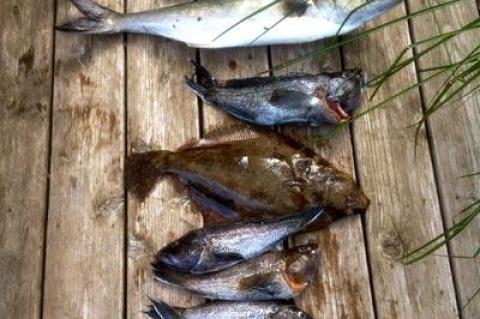 The Marauders, Unmasked
The Marauders, Unmasked“They’re marauding all over,” was how Peter Spacek, The Star’s cartoonist, described the bluefish now invading Montauk waters. If any species can “maraud,” it’s Pomatomus saltatrix.
They are ferocious feeders from baby snapper to 20-pound “chomper.” Their aggressive chomping not only feeds them, but also the less aggressive striped bass that often school beneath the chomping to suck up the scraps descending from the carnage. Just as geese are beginning to fly, big bluefish are flocking to Montauk’s aqua-copia for their fall feed.
The author Thomas Berger died recently. After “Little Big Man” one of his titles was “Sneaky People.” It portrayed a kind of negative utopia where women dominated in the business world and elsewhere, and their rise to eminence was based on deception and craftiness. Farcical as his novel was, many would say that’s how men came to rule the corporate and political spheres, and in many cases they would be right.
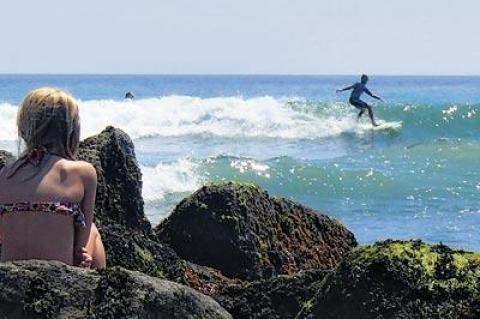 They Tried to Ban Surfing
They Tried to Ban SurfingThe annual Rell Sunn surf contest was held at Ditch Plain Beach in Montauk on Saturday. Each year the tournament’s entry fees, raffles, and auction raise money to help disadvantaged members of the community.
I was sitting with one of the world’s most noted algologists and marine phycologists in the world having lunch in a restaurant in Amagansett with him and three women. We had just listened to the address by the National Audubon Society’s president at the Nature Conservancy’s headquarters in East Hampton.
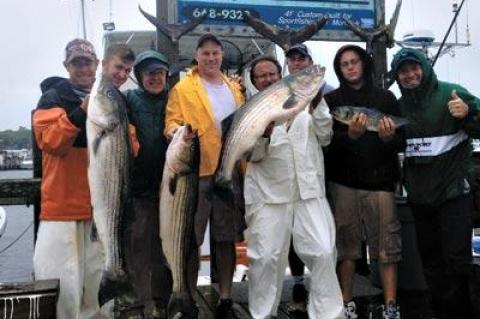 Something’s Feeding the Fish
Something’s Feeding the FishAboard Leilani, 5:55 Tuesday morning. She and the other sailboats are wrapped in pink gauze, the light fog lifting along with the sun.
 Keep the Tip Up, Skyward
Keep the Tip Up, SkywardSure, they loved him. He was their father, a brother, an uncle, a husband. They loved him, but they didn’t know, or appreciate, his inner fisherman. The extended family was spread out on the downtown Montauk beach on vacation a week ago.
